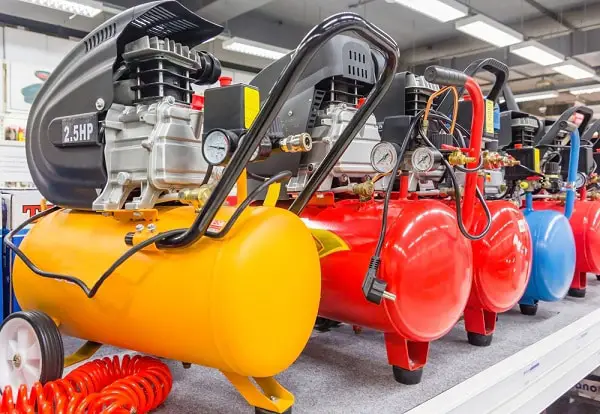
Air Compressor Maintenance and Management
When owning an air compressor, it’s easy to forget that there is some routine maintenance that is required to help prevent future problems from occurring. Most of these can be checked daily or after every use and some only need to be checked monthly. Below are some of the things you should be looking at and when they should be checked.
Daily or after every use:
These are quick checks that should only take a few minutes, but be done frequently.
Check the oil levels and inspect for leaks. This step can obviously be skipped if you use an oil-free compressor. For compressors that do use oil for lubricant, you’d want to make sure the level is around the halfway point on the sight glass. You don’t want there to be too much oil or too little.
Make sure the unit is turned off and on a level surface when checking. You should also Inspect the crankcase assembly and look for dirt that might have built up.
Drain water in the tank. Pressurized air will always cause condensation and over time pools of water collect inside your tank.
Every tank has a release valve located near the bottom that allows the excess water to escape. Be sure to drain the water while there is still a little pressure left in the tank when you are done using the machine.
Check for weird noise and extra vibration. It can be difficult to hear anything with the compressor running, but an odd noise can be an indicator that something is wrong. If you can’t pinpoint the cause of the noise you should check the condition of the belt and inspect the pipe connectors for any air leaks.
Monthly:
These are tasks that will take more than a few minutes, but they only need to be done occasionally to ensure proper functioning.
Check the air filter. For your compressor to fill the tank as quickly as possible, it will need the airflow to be free from blockage. Clean your filter and replace it when needed you to keep your compressor running at most optimum.
Check the safety relief valve. To do this, have the machine on and pressurized then pull the ring on the relief valve. Turn off the compressor and plug the valve when done to ensure correct operating pressure for next time.
Check and tighten all bolts, connections, and belts. You don’t want to have to wait to hear a weird noise coming from your compressor one day and then spend time locating where it’s coming from.
Be sure your bolts and connections are fitted on properly. You can use plumbers’ tape to help prevent air leaks. Also Inspect the condition of your belt, making sure there’s no cracks or damage and that the tension is correct.
Nothing on this list will take very long. But by taking the time for these simple maintenance checks, you can ensure your compressor is working for years.
Related Video:

